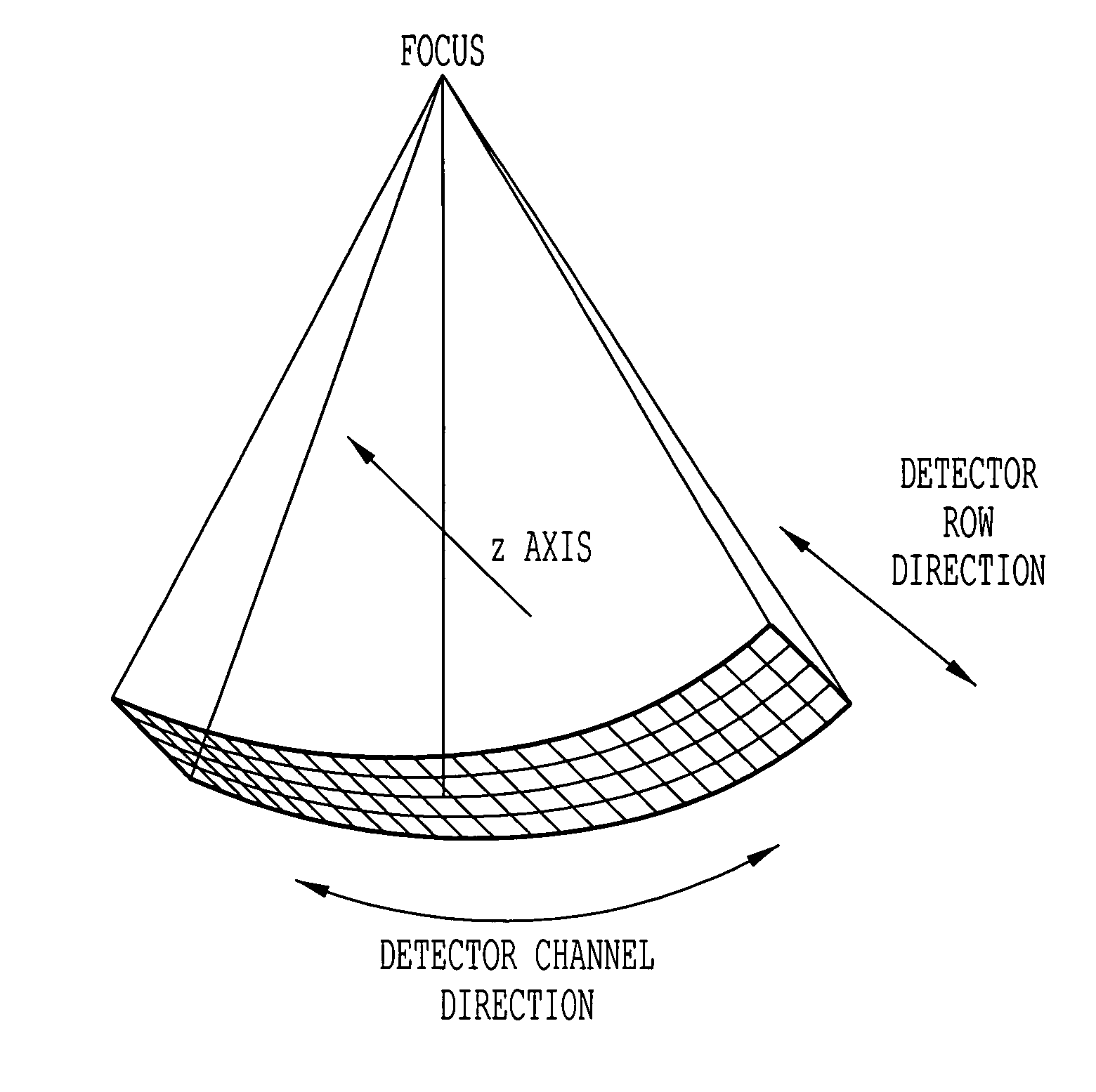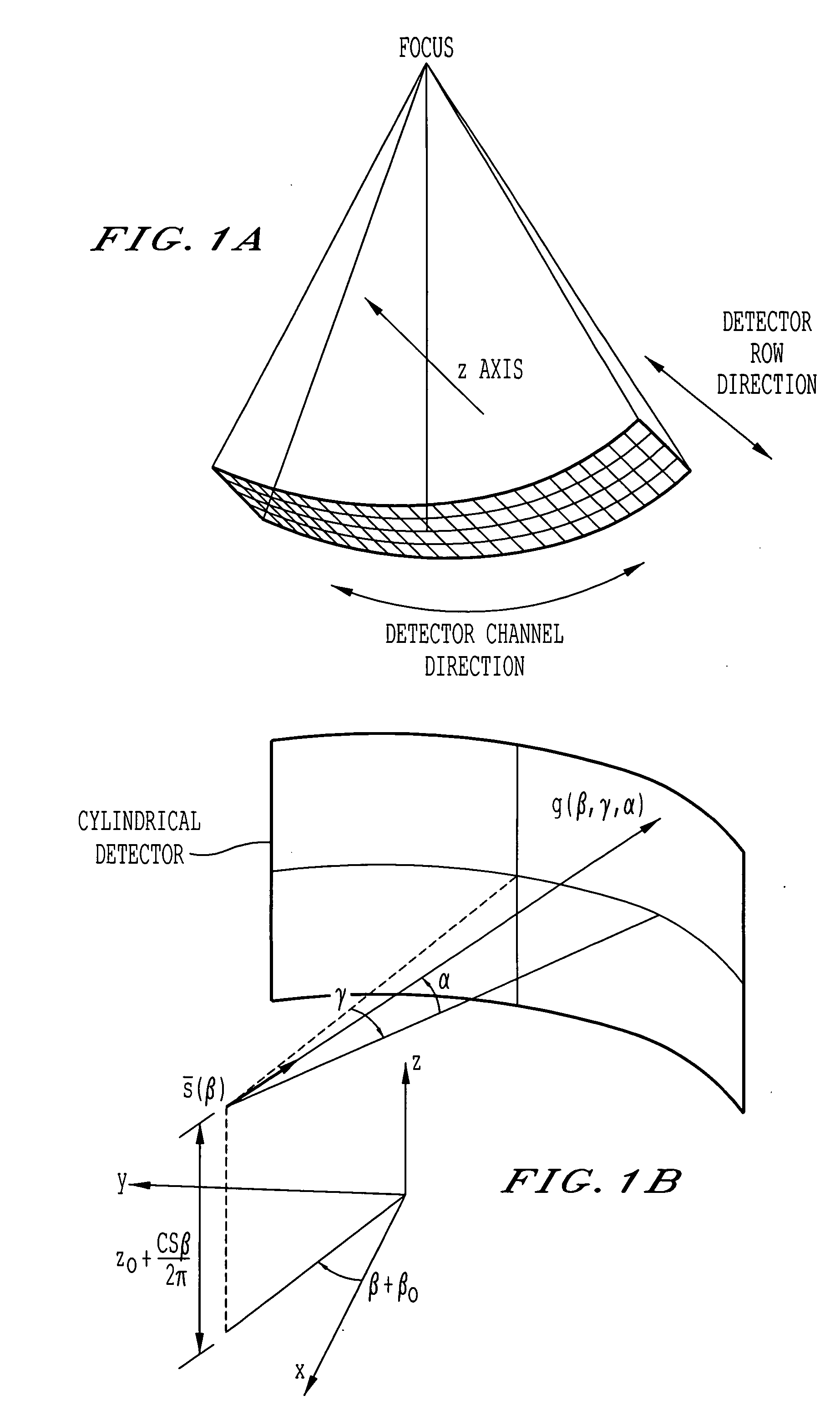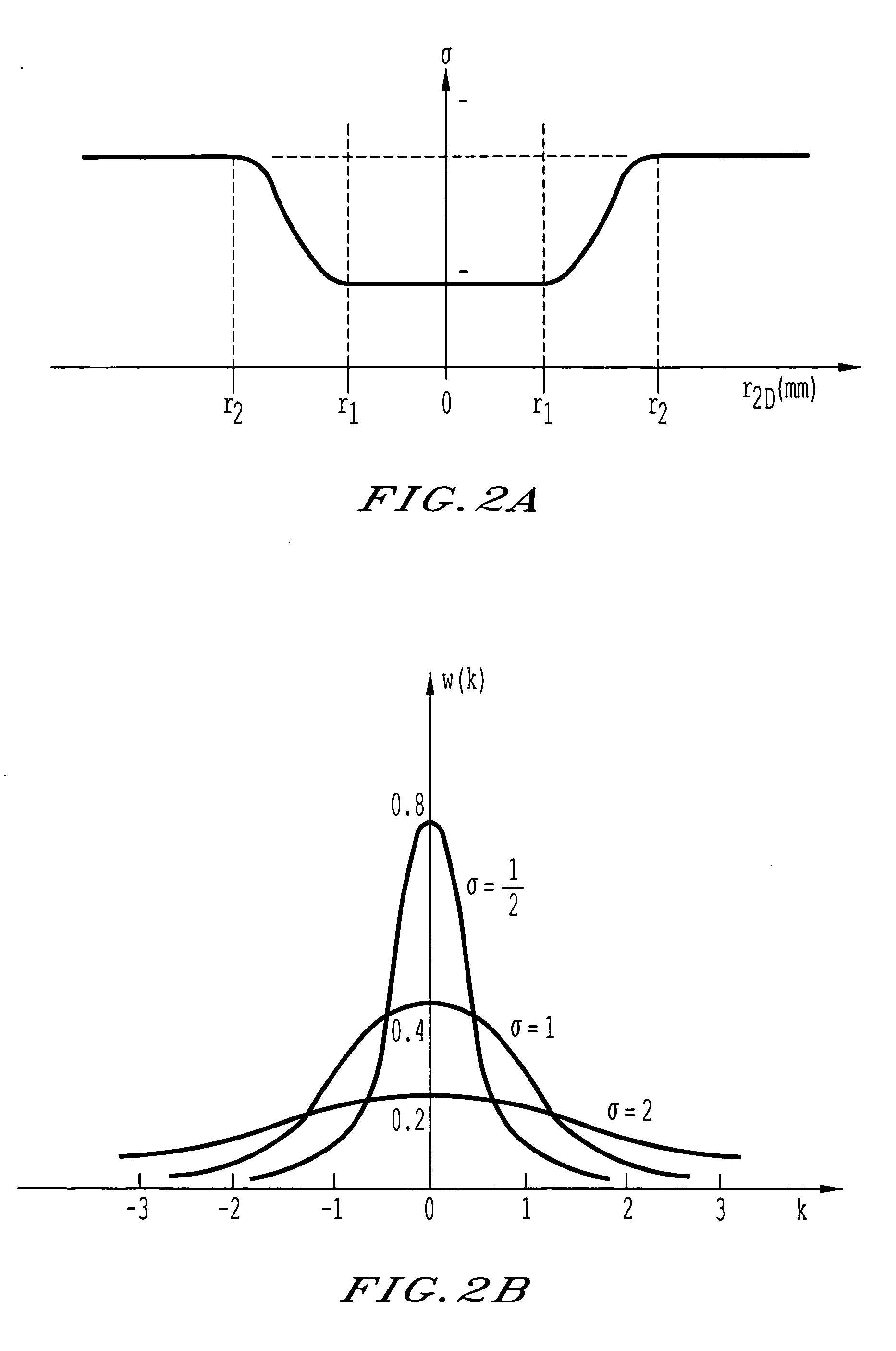Radius-in-image dependent detector row filtering for windmill artifact reduction
a detector row and windmill technology, applied in tomography, instruments, applications, etc., can solve the problems of aliasing artifacts in reconstructed images, insufficient sampling intervals in the z-axis (detector row) direction, and data size double the size of current us
- Summary
- Abstract
- Description
- Claims
- Application Information
AI Technical Summary
Benefits of technology
Problems solved by technology
Method used
Image
Examples
Embodiment Construction
[0026] The sharpness of the kernel increases with decreasing r2D (e.g., a projected distance from the iso-center to the ray-sum onto the xy-plane), so that pixels near an iso-center have better z-resolution than in the periphery. Thus, the cause of the windmill artifact at the peripheral regions may be suppressed by applying a smoothing kernel to the corresponding detector channels.
[0027] To this end, filter data in a detector row direction may be obtained prior to image reconstruction. The kernel of the filter may be defined as a function of the ray-angle. That is, the kernel may be adjusted based on the projected distance from the iso-center to the ray-sum onto the xy-plane. Equation 1 (below) provides the desired function: pout (v,ch,row)=∑k=-KK[wGn(k,ch)·pin (v,ch,row+k)](1)
In Equation 1, pin is the projection data, v represents the projection number index corresponding to the projection angle β, ch is the detector channel index corresponding to the ray angle γ, row is ...
PUM
 Login to View More
Login to View More Abstract
Description
Claims
Application Information
 Login to View More
Login to View More - R&D
- Intellectual Property
- Life Sciences
- Materials
- Tech Scout
- Unparalleled Data Quality
- Higher Quality Content
- 60% Fewer Hallucinations
Browse by: Latest US Patents, China's latest patents, Technical Efficacy Thesaurus, Application Domain, Technology Topic, Popular Technical Reports.
© 2025 PatSnap. All rights reserved.Legal|Privacy policy|Modern Slavery Act Transparency Statement|Sitemap|About US| Contact US: help@patsnap.com



